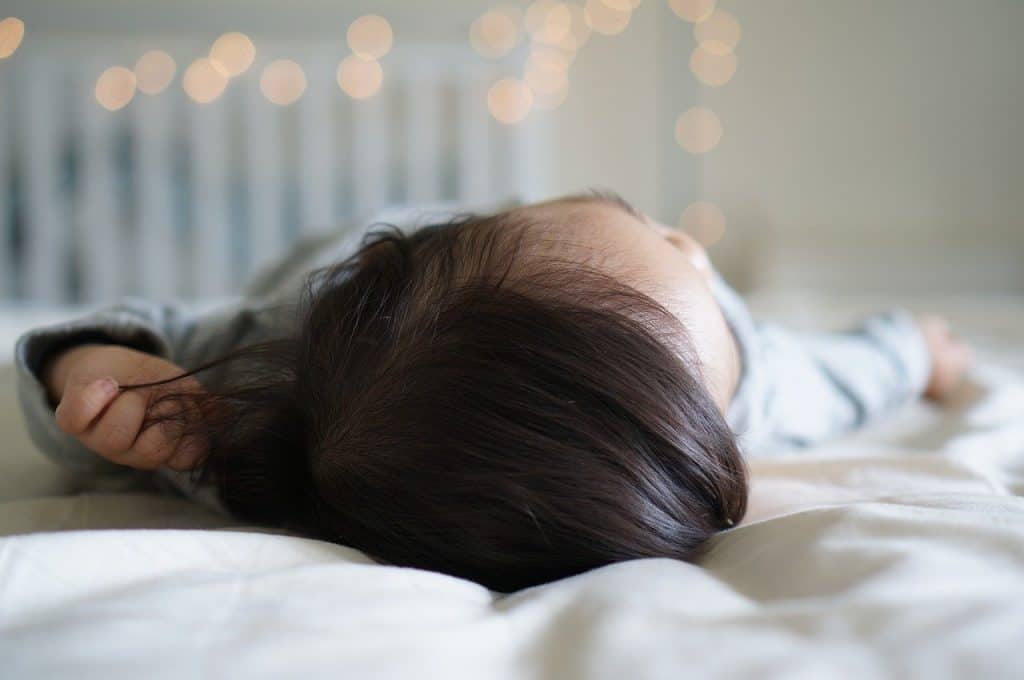Creating the ideal sleep environment for babies
There is no doubt that the room in which your baby sleeps is important. The environment in which you choose to put your baby or child to bed needs to be inducive to sleep, and there are easy ways to achieve that. Here is a quick guide to creating the ideal sleep environment:
In your room
During at least the first six months, your baby is likely to be sleeping in your room, but that doesn’t mean you don’t need to need to adapt the environment a little:
- Lights. If you don’t have a lamp or only have one intended for reading, you might want to swap it for a dimmer light. You want to keep the room as dark as possible. If you can, situate the lamp as close to the door as possible so that you can leave the room in darkness but can turn it on easily when you come up to bed. The last thing you want is to stumble around when you go to bed and wake the baby!
- Dark. We all sleep better in a darkened room; in fact, when your child is over 12 weeks old, they will produce melatonin (which induces sleep) when they get into a darkened room. Blackout at the windows will help keep the room nice and dark.
- Temperature. It needs to be warm, but not too warm. Remember that babies can’t regulate their own body temperatures, so investing in a nursery thermometer is a good idea. This can be as simple as one that you stick on the wall (that only cost a small amount) to the latest in technology advancements. Either way, you need to know that the ideal temperature for a baby’s room is between 68 and 72 degrees Fahrenheit.
- No screens! Don’t take your laptop or tablet to bed with you, and keep your cell phone use to a minimum. Why? Research has shown that the lights coming from them prevents baby from producing essential melatonin, which is needed for sleep. This is another reason why dim lights are vital. Research has also shown that adults who go to bed immediately after looking at a screen tend to sleep restlessly, so it’s a good idea all around to leave all devices downstairs when you want to sleep.
In baby’s room
Before baby is settled in her room, there are a few things you will want to do to make sure it is as comfortable as possible for her to sleep in. Again, use the checklist from above for essential sleeping tips. You need dim lighting (perhaps a night light that can be switched on only when you need to go in at night), and you need to make sure it is the correct temperature and that there are no apparent drafts- so don’t place the crib near the window for example. In addition, you might want to think about:
- Decorations. It’s very tempting to paint lots of bright colours in the nursery, or to hang wonderful pictures etc. But try not to overcrowd the room. Remember that young babies (especially those with a more intense temperament) can find bright colours and lots of pictures quite stimulating, and research has actually shown that colours such as red and orange can make a person feel agitated or cramped. Bright colours can be overwhelming, and hanging mobiles can also be too much of a distraction. If you can, stick to muted colours that will help baby to relax.
- No clutter. It’s tempting to store things in the room that is least likely to have people coming and going as much as others (hopefully!) but try not to use your baby’s room this way. Take care to keep the floor free from clutter so that the room is as calm as possible, and you’re less likely to fall over something whilst trying to help your child to sleep.. It goes without saying that no toys or other items should be placed into the crib either.
- Ditch the distractions. If your child has a more intense temperament, I would try to avoid distractions, especially over the bed. Mobiles (as previously mentioned) or sound and light machines could cause too much of a distraction for sleep. If your child has a more laid back temperament, they may be fine with a mobile.
- Noise. Keep it to a minimum, but don’t tiptoe past baby’s room each time you need to use the bathroom! Babies are able to sleep through general noise fairly well, so you don’t want the entire house to shut down at 7 pm when baby goes to bed. During the day, it can help baby to determine nap time from nighttime sleep if you carry on as you usually would- so don’t unplug the phone or ban visitors. Life must go on when baby sleeps! In fact, white noise can help your child sleep.
- Keep it familiar. Children who are shy and slow to warm up will struggle with a change from their normal routine. The last thing to remember is that routine is key for most babies. So don’t be tempted to move the room around when you feel like a change. This can be upsetting for baby, and the last thing you want is to disturb the great sleeping environment you’ve worked so hard on!




